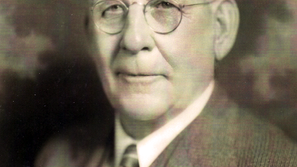Taking a peek at the highest peak in North America
- Tom Elias
- Oct 9, 2019
- 4 min read

For The Madera Tribune
Colorful fireweed frames much of the landscape in Denali National Park.
DENALI NATIONAL PARK, Alaska — The Athabaska Indians gave this place its name — the Great One, or the High One, take your pick — thousands of years ago, millennia before white Americans dubbed the 20,320-foot peak Mt. McKinley in the late 19th Century.
Now the Great One has its old name back, not that there’s any sign it ever noticed the change or cared what anyone called it. Regardless of name, it’s still the highest peak in North America.
Modern Native Americans insisted on the name change and the National Park Service went along, so you will barely find the name of the late President William McKinley anywhere in the 6.07 million-acre park.
But you will find plenty else. A 1,700-member caribou herd, countless moose which sometimes wander right up to the park’s sole significant road as they feed on tree leaves and other green matter. Grizzly bears can pop up almost anywhere in the park, plus foxes, coyotes, marmots, jackrabbits that love sitting in the middle of the park’s only road and much more.
This is not the most accessible of national parks, but it might just be the most natural in the 190-some park system whose units appear from the Virgin Islands and Florida Keys to the Hawaiian Islands, from Acadia National Park in Maine to the Channel Islands in Southern California.
To get here, you can drive the Alaska Highway, running north through the Canadian province of British Columbia and the Yukon Territory, ending up near 18,008-foot Mt. St. Elias, in an eponymous national park, another spectacular peak in southwestern Alaska. Denali’s parking lots are peppered with license plates from places like Texas, Colorado, Washington State and California.
But most people get here by plane and rental car or a ship-and-train combination. That’s how it works for passengers from Princess Cruise ships that ply the Alaska coast from Seattle and Vancouver, BC, often docking in Whittier, not far from Anchorage, Alaska’s largest city. Many are bused from ship to train, then stay in a Princess-branded hotel less than a mile from the park entrance.
Those passengers then must leave luxury buses behind if they want to see Denali and its wildlife, switching to converted school buses painted in Park Service green and tan, their passengers encouraged to shout out for the driver to stop so they can gaze at leisure at a moose or bear that may be right nearby, or as much as two miles off.
That’s right — larger animals here can be spotted at great distances from the road because most of Denali is tundra, with grassy plains and mountainsides offering grand vistas to the High One (when it’s not behind a cloud bank, which means about one day out of three).
So the park buses that everyone here rides for tours or just to reach campgrounds beyond the 14 miles of park road that’s paved, stop often and long to take in the wildlife.
The most popular organized tour here, the eight-hour Tundra Wildlife Tour, begins a mere mile from the park entrance and goes 62 miles into the preserve, crossing wide rivers whose beds are filled with islands of dirt, rock and whatever else has washed off the mountainsides in the last week or so. Cost is $192 for adults, $87.50 for children.
The bus we took on a July visit stopped every 10 minutes or so, whenever a keen-eyed passenger sang out that an animal was in sight. Driver-guide Mike Reifler happily hopped out from behind the wheel to man a long-lensed video camera that brought close-ups of grizzly bears wrestling playfully beside streams, bull moose standing protective guard as female moose and their kids grazed nearby and caribou seemingly in a rush to get somewhere. The show went onto drop-down video screens placed every few rows in the tour’s modified Bluebird school bus.
“This is just a great job,” Reifler confided to his charges. “I get to see the big mountain often, I get to be out in this fabulously beautiful country every day; it’s my dream life.” His wife also drives Tundra Wildlife Tour buses (“We try to schedule on different school days, so we can take care of our child care needs,” Mike said.).
His obvious pleasure became infectious, with passengers continuously eager to stop the bus for new encounters right down to the end of the 8-hours.
This is a time-consuming way to see a unique national park, but on it you’ll see details that never show up on small airplane tours that can cut through the clouds and get views of the High One just about every day.
It also costs much less than plane trips offered, for one example, by Fly Denali, which operates from Healy, closest town to the park. These run $549 per adult for 100 minutes of flying time, $412 for children. That trip also includes landing and walking on a glacier for about 20 minutes. Other flying tours are available from Talkeetna, about 45 miles from the base of the big mountain, and just over 120 miles from Denali National Park by car.


























Comments